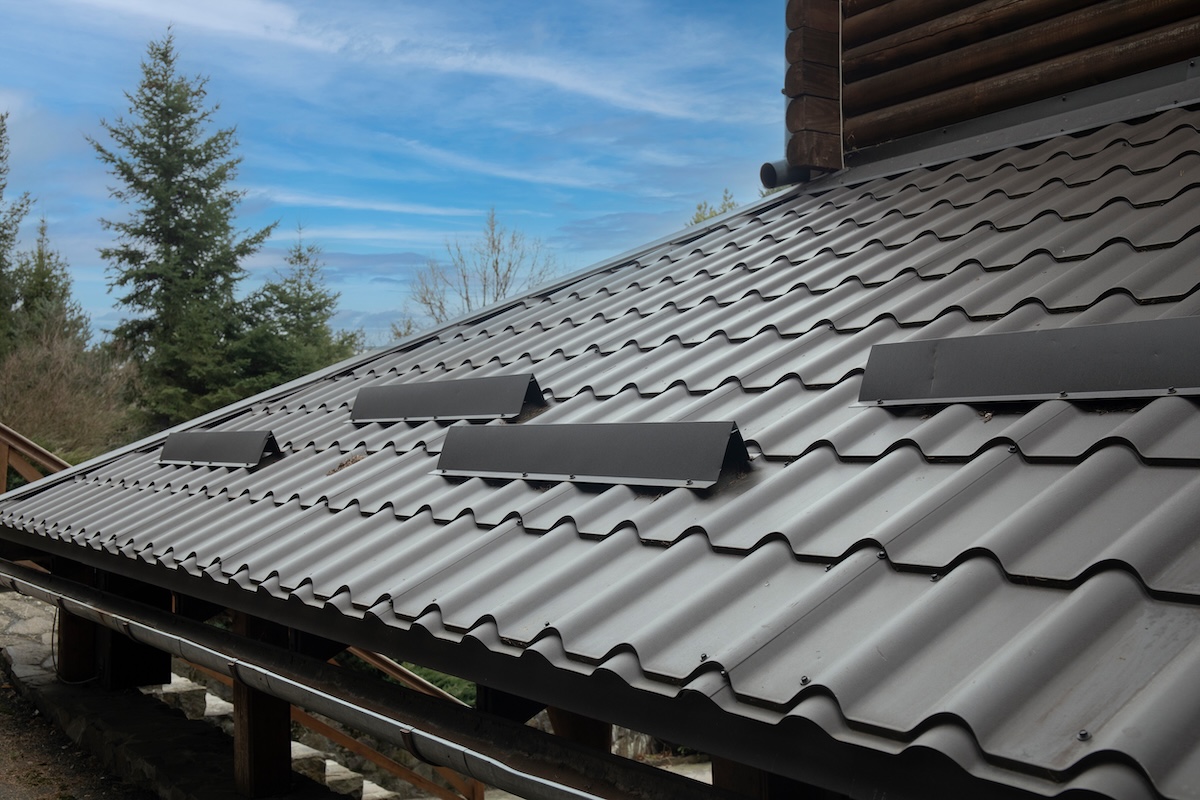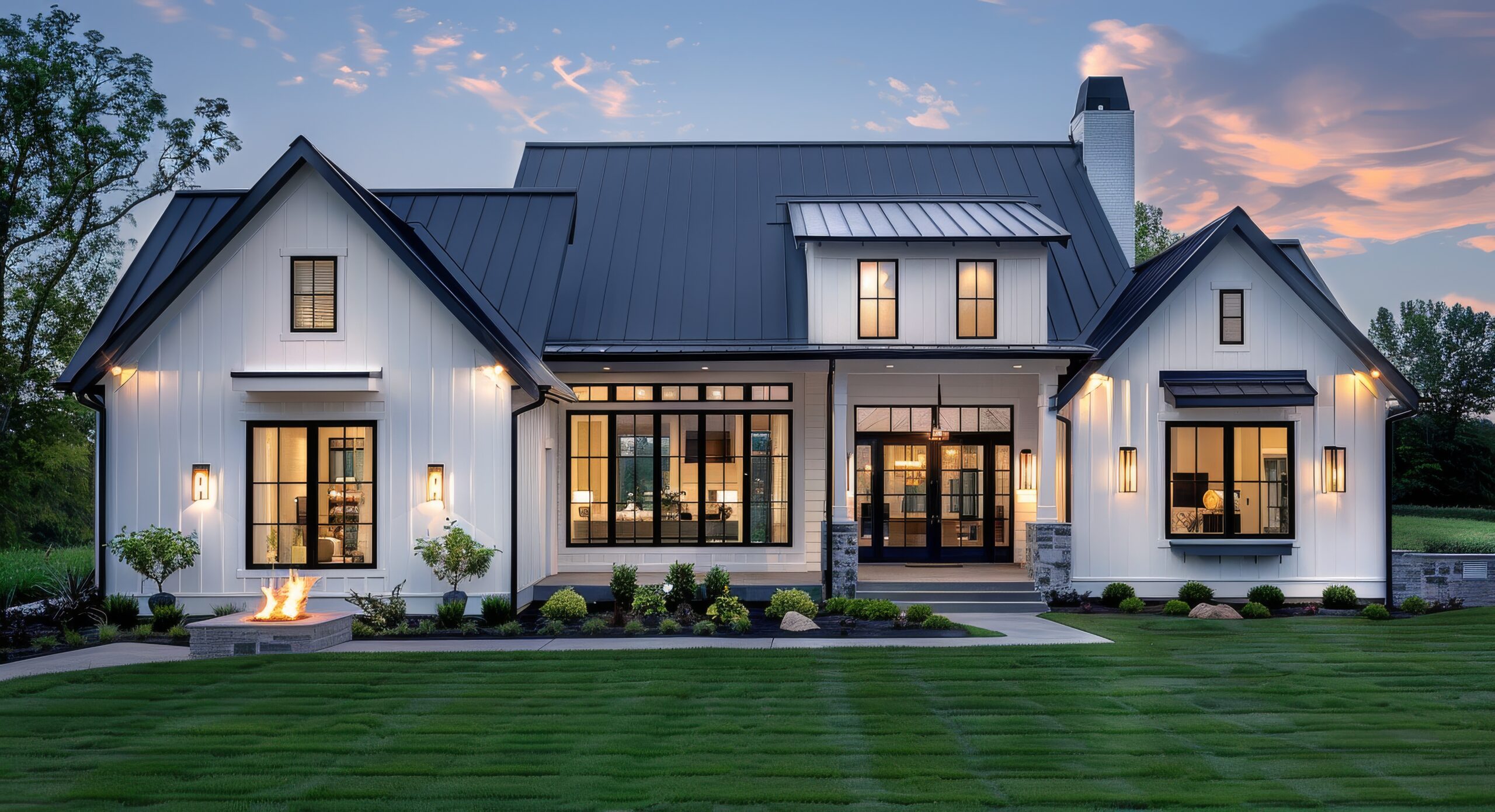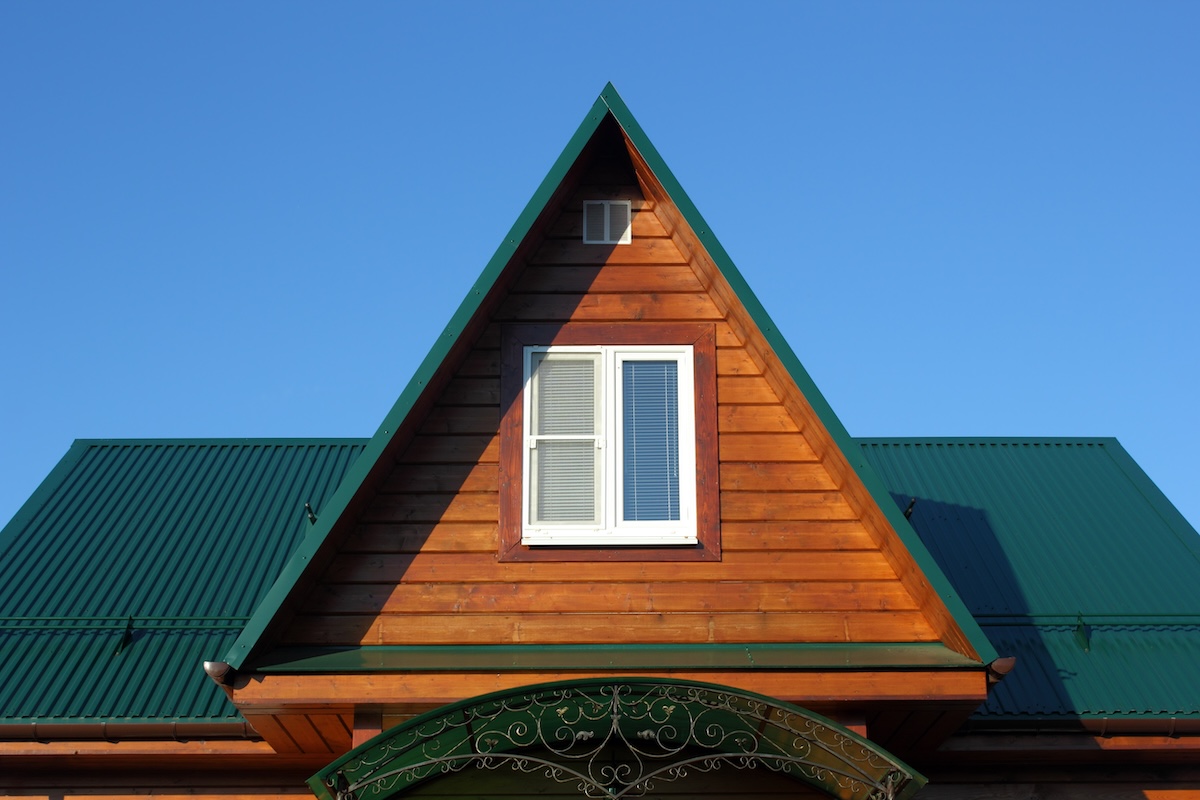Choosing a new roof for your home is a major decision. With so many materials available, it’s important to weigh the pros, cons, and costs of each option. As a popular choice for homeowners in Indiana and Ohio, many people ask about the metal roof cost and whether it’s a worthwhile investment.
Metal roofing has gained a reputation for its durability and longevity, but the initial price tag can seem high compared to traditional shingles. Understanding the factors that influence the cost will help you see the bigger picture and the long-term value it offers.
This blog post will cover:
- The key benefits of investing in a metal roof.
- A detailed breakdown of metal roofing costs in 2026.
- Factors that can affect your final price.
- How metal roofs compare to other materials like asphalt shingles.
💰 Why a Metal Roof Is a Smart Investment

While the initial cost is a significant factor, it’s crucial to look beyond the upfront price and consider the long-term advantages. A metal roof is not just a covering for your house; it’s a durable, efficient, and valuable addition to your property that pays for itself over time.
Thinking about the long-term benefits can put the initial expense into perspective. A metal roof offers superior protection and can even save you money on energy bills and maintenance, making it a wise financial decision for many homeowners.
- Exceptional Longevity: Metal roofs can last 50 years or more, which is two to three times longer than traditional asphalt shingles. This means you might never have to replace your roof again.
- Outstanding Durability: Built to withstand extreme weather, metal roofs can handle high winds, heavy rain, snow, and hail. They are also fire-resistant, providing an extra layer of safety for your home.
- Energy Efficiency: Metal roofs reflect solar heat, which can reduce your cooling costs by up to 25%. This energy efficiency is not only good for your wallet but also for the environment.
- Low Maintenance: Unlike other roofing materials, metal roofs require very little maintenance. They resist moss, mildew, and insect damage, saving you time and money on upkeep.
- Increased Home Value: The durability, longevity, and attractive appearance of a metal roof can significantly increase your home’s resale value.
💵 5 Factors That Determine Metal Roof Cost in 2026

So, how much does a metal roof actually cost? While a precise quote requires a professional inspection, we can provide average costs for 2026 to give you a clear idea. The total expense depends on several variables, from the type of metal you choose to the complexity of your roof.
On average, homeowners can expect to pay between $8.50 and $16.00 per square foot for a professionally installed metal roof. For a typical 2,000-square-foot roof, this translates to a total cost ranging from $17,000 to $32,000. Here are the key factors that influence that price.
1. Type of Metal Material
The material you select is the biggest driver of cost. Each metal type has its own price point and unique set of benefits.
- Steel: Galvanized and galvalume steel are the most common and affordable options, typically running from $7 to $12 per square foot. They offer a great balance of durability and cost-effectiveness.
- Aluminum: Lightweight and corrosion-resistant, aluminum is an excellent choice for coastal areas. It usually costs between $9 and $14 per square foot.
- Copper and Zinc: These are premium, high-end metals known for their stunning appearance and incredible lifespan (often over 100 years). They are also the most expensive, with costs starting at $20 to $30 per square foot or more.
2. Style and Finish
Modern metal roofing comes in various styles, allowing you to match your home’s aesthetic. The style you choose will impact the final price.
- Standing Seam: This popular style features vertical panels with concealed fasteners, offering a sleek, modern look and superior weather resistance. It’s generally more expensive than other styles due to the skilled labor required for installation.
- Metal Shingles/Tiles: These products mimic the look of traditional asphalt shingles, slate, or tile but provide the durability of metal. They are often a mid-range cost option.
- Corrugated Panels: The most basic and budget-friendly option, these panels have an exposed fastener system. They are often used for barns and commercial buildings but are also a choice for rustic-style homes.
3. Roof Size and Complexity
It’s simple: a larger roof requires more materials and labor, increasing the overall cost. But it’s not just about square footage.
- Pitch and Slope: A steeply pitched roof is more dangerous and difficult to work on, which increases labor costs.
- Complexity: Roofs with multiple angles, dormers, chimneys, and skylights require more detailed work, custom cuts, and flashing, all of which add to the installation time and cost.
4. Labor and Installation
Labor costs can account for 40-60% of the total project price. This is one area where you don’t want to cut corners.
- Experienced Crew: Proper installation is critical for the performance and longevity of a metal roof. Hiring a qualified team like Maumee River Roofing ensures the job is done right.
- Old Roof Removal: If your old roof needs to be torn off and disposed of, this will add to the labor cost. In some cases, metal roofing can be installed over an existing shingle roof, but this isn’t always recommended.
5. Geographic Location
Where you live also plays a role. Material and labor costs can vary significantly between different regions of Indiana and Ohio.
- Local Labor Rates: The cost of labor is influenced by the local economy and demand for skilled roofers in your area.
- Building Codes: Your local building codes may have specific requirements for roofing installations, which can sometimes add to the complexity and cost of the project.
🤔 Metal vs. Asphalt Shingles

When comparing metal roof costs to traditional asphalt shingles, it’s important to think about the long-term value. While asphalt shingles have a lower upfront cost, they don’t offer the same longevity or durability as metal.
- Upfront Cost: Asphalt shingles are cheaper to install, typically costing between $4.50 and $7.00 per square foot. This makes them an attractive option for homeowners on a tighter budget.
- Lifespan: An asphalt shingle roof generally lasts 15-25 years, while a metal roof can last 50 years or more. You may need to replace an asphalt roof two or three times in the lifespan of a single metal roof.
- Durability and Maintenance: Metal is far more durable and requires less maintenance. Asphalt shingles are more susceptible to damage from weather, moss, and algae, often requiring more frequent repairs.
- Energy Efficiency: Metal roofs are significantly more energy-efficient, which can lead to substantial savings on your energy bills over the life of the roof.
While the initial investment for a metal roof is higher, its extended lifespan, lower maintenance needs, and energy savings often make it the more cost-effective choice in the long run.
🏠 Ready to Upgrade Your Roof?
A metal roof is a premium product that offers unmatched durability, style, and long-term value. While the initial metal roof cost may be higher than other options, the investment pays off through decades of protection, low maintenance, and energy savings. By understanding the factors that influence the price, you can make an informed decision that fits your budget and enhances your home for years to come.
If you’re ready to explore the benefits of a metal roof for your Indiana or Ohio home, our team at Maumee River Roofing is here to help. We provide detailed inspections and transparent quotes to ensure you feel confident in your decision.
Contact us today to schedule your free, no-obligation estimate!
